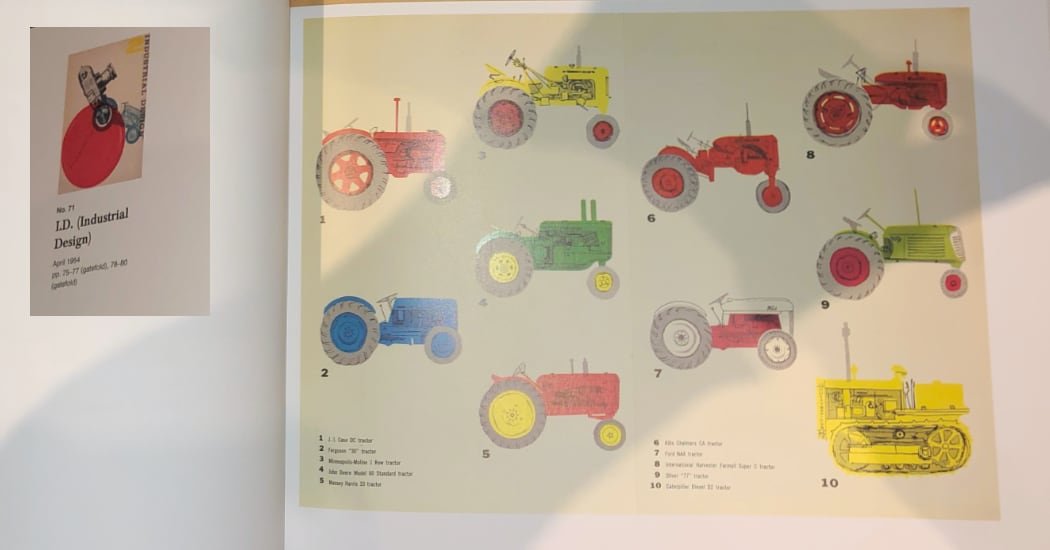06 Notes
Andy Warhol: The Complete Commissioned Magazine Work
Amazing discovery to learn more about the pre-Pop Warhol. He worked with some favorite art directors and this book is a treasure trove of his work as a commercial artist.
In addition to familiarizing him with printing processes, Warhol's magazine work brought him into contact with the best art directors in the publishing industry, and these relationships contributed to his evolution as an artist.
Alexander Liberman, Alexey Brodovitch, Henry Wolf, Art Kane, Otto Storch, Cipe Pineles, Bradbury Thompson, Robert Cato, Jim Flora, and Souren Ermoya were some of the top art directors with whom Warhol had the opportunity to collaborate. The budding artist considered them mentors as well as clients. The present catalogue offers an account of these crucial collaborations through entries on each of the seventeen magazines with which Warhol worked most frequently, revealing a network of influence hitherto unexplored.
[He] did several versions of each of his assignments, showing all of them to the art directors, who loved him for that....Art directors showered Warhol with assignments because he worked fast, made deadlines and displayed a properly submissive attitude when they demanded revisions. “If they told me to draw a shoe,” he said, “I’d do it, and if they told me to correct it, I would — I’d do anything they told me to do, correct it and do it right. After all that ‘correction’, those commercial drawings would have feelings, they would have a style. The attitude of those who hired me had feeling of something to it; they knew what they wanted, they insisted; sometimes they got very emotional. The process of doing work in commercial art was machine-like, but the attitude had feeling to it.”
Alexey Brodovitch had the eye. Beginning in the 1930s Harper’s Bazaar’s art director became famous for his ability to look through contact sheets and know precisely what images to choose, where to crop, and arrange to produce highly elegant and refined pages and spreads. And he’s since come to be considered American publication design’s most innovative and skilled practitioner.
One of his freelancers in the 1950s was a struggling, unkempt graphic artist nicknamed Raggedy Andy. This up-and-comer produced 75-plus jobs for Harper’s Bazaar, first under Brodovitch and then Henry Wolf, Bea Feitler, and Ruth Ansel. And he won plenty of awards. And he went even further than that.
Technologies
- CSS Grid Layout
- CSS Flexbox
- CSS custom properties
- Media queries










